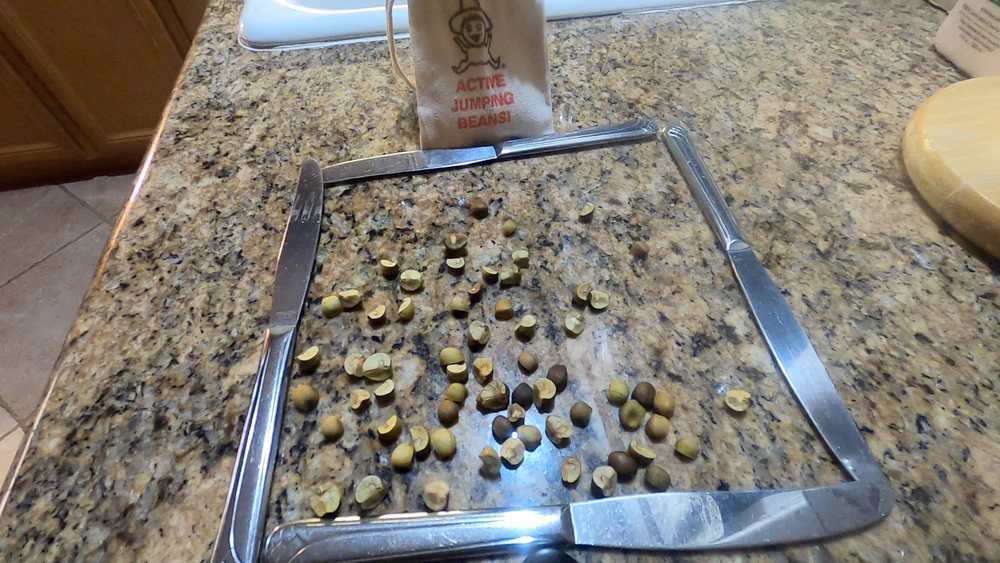Mexican jumping beans (also known as frijoles saltarines in Spanish) are seed pods that have been inhabited by the larva of a small moth (Cydia deshaisiana) and are native to Mexico. The "bean" is usually tan to brown in color. It "jumps" when mildly heated. They are from the shrub Sebastiania pavoniana, often also referred to as "jumping bean". However, they are not related to actual beans (legume plants), but rather to spurges. The beans are considered non-toxic but are not generally eaten.
After the moth-laid egg on the plant hatches, the larva eats away the inside of the bean (until it becomes hollow) and attaches itself to the inside of the bean with silk-like thread. The larva may live for months inside the bean with varying periods of dormancy. If the larva has adequate conditions of moisture and temperature, it will live long enough to go into a pupal stage. In the spring, the moth forces itself out of the bean through a round "trap door", leaving behind the pupal casing. After its metamorphosis, the small, silver and gray-colored moth lives for no more than a few days.

